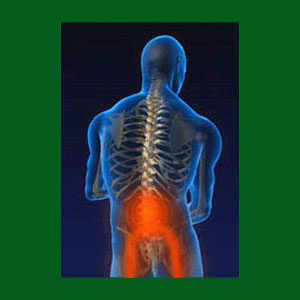
There is a small chance of suffering cauda equina syndrome from spondylolisthesis of a significant grade, such as 3 or 4. While CES is a very rare consequence of vertebral migration, there is always a risk of such a dire condition occurring, since listhesis can cause a loss of patency within the central spinal canal, as well as within the foraminal spaces.
Cauda equina syndrome is one of the worst diagnoses a patient can receive in regards to a back pain condition. The diagnosis usually involves emergency surgery to restore patency to the spinal canal and remove pressure from the cauda equina nerve roots. In virtually every case, this means the implementation of spinal fusion in the lower back region.
This discussion focuses on the relationship between spondylolisthesis and resulting cauda equina syndrome. We will detail why CES can occur in the lower back, the symptoms that might occur and how the condition should be managed medically for optimal outcome.
Cauda Equina Syndrome from Spondylolisthesis Defined
Cauda equina syndrome is considered a medical emergency. It occurs when some structural issue compresses the spinal nerve roots that branch off the spinal cord when the cord ends around level L1. These remaining spinal nerve roots continue to thin as they progress down the spinal column, since they exit at each spinal level. Therefore, the shape of the nerve bunch narrows from group to a single nerve, forming a triangle shape akin to a horse’s tail; hence the name.
These spinal nerve roots serve important motor and sensory roles in the lower body. They innervate the area from the lower back down, including the buttocks, groin, genitals, legs and feet. These are also the nerves that can cause true spinally-motivated sciatica.
Any compression of a spinal nerve roots is a serious occurrence, but compression of multitude nerves en masse can cause major transient or permanent neurological deficits. They longer the compression ensues, the greater the chances of the patient suffering chronic loss of neurological functionality in the affected tissues, so emergency surgery is almost a universal prescription, when viable.
Cauda Equina Syndrome Symptoms
The symptoms of cauda equina syndrome can progress very quickly or might slowly worsen over time, depending on many factors. These symptoms include any of the following expressions:
Lower back pain is often a preliminary symptom in slow progressing cases. This pain might be severe or rather mild and many patients do not suffer any pain at all, but instead, tightness and a feeling of pressure in the lower back and buttocks.
Tingling and numbness are classic signs of cauda equina syndrome. These symptoms are usually objective and verifiable during neurological evaluation. Tingling progressing to numbness might affect many areas of the lower body, depending on the actual nerves affected. Typical cases include saddle paresthesia, genital paresthesia, numbness in the perineum and anus, leg numbness and foot numbness. Symptoms can be unilateral in some instances, but are more often bilateral.
Many patients quickly develop objective weakness in the muscles of the lower anatomy. Most will not be capable of standing or walking. Some will demonstrate paralysis of particular parts of the lower body in complete or incomplete expressions.
Incontinence of bladder and/or bowels is another classic sign of significant cauda equina syndrome. In slow progressing cases, patients might notice extreme constipation or sexual dysfunction first.
Cauda Equina Syndrome from Spondylolisthesis Mechanism
We must first reiterate that cauda equina syndrome from spondylolisthesis is a very uncommon occurrence. Most cases will never result in such dire consequences. However, let’s explore how vertebral listhesis can actually create CES in the lower spinal canal:
Traditionally-located spondylolisthesis affects L5 (or L4 in less common circumstances). When a vertebral bone shifts forward in anterolisthesis, or rearward in retrolisthesis, the normal patency of the spinal canal is reduced. This makes sense, since the canal runs through the hollow of each vertebral bone and when a bone migrates, the hollow will migrate along with it. Therefore, the spinal canal will become stenotic at the listhesis level.
Since listhesis can also cause herniated discs to develop, the spinal discs above and/or below the affected bone might bulge or rupture. These circumstances can further reduce the patency of the spinal canal.
Since listhesis can cause facet joint injury, debris around the foraminal openings might also compress individual nerve roots as they seek to exit the spinal canal. This foraminal stenosis might be symptomatic.
Basically, imagine a hollow tube cut into segments which are stacked on top of one another. This hollow represents the spinal canal and the segments are the spinal bones. When one segment is shifted out of alignment, the hollow tube in the middle closes off. Since the cauda equina nerve roots are contained within the hollow space (the spinal canal), they might suffer compression and resulting CES.
Spondylolisthesis > Spondylolisthesis Diagnosis > Cauda Equina Syndrome from Spondylolisthesis



